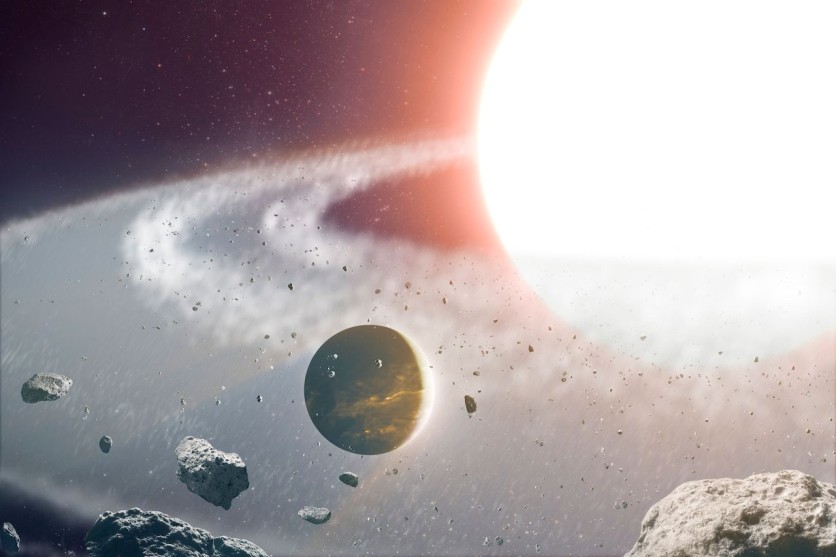NASA has unveiled a celestial anomaly: a colossal planet is seemingly orbiting around a dying star that should have destroyed it. Planet 8 Ursae Minoris b, residing some 530 light years away, defies conventional astrophysical expectations. The star it encircles, currently in its death throes, is a swollen red giant.

According to established models, the star is expected to expand beyond the planet's orbit before contracting to its present, still enormous, size.
Theoretically, this process should have the star engulfed and completely destroyed any planets closely orbiting around it. Yet, against all odds, this planet remains in a remarkably stable, nearly circular orbit.
The discovery, facilitated by measurements courtesy of NASA's Transiting Exoplanet Survey Satellite (TESS), illuminates the intricacies and unpredictabilities inherent in both the formation and dissolution of celestial bodies.
Two Alternative Scenarios
When stars reach their end, they undergo a transformation, depleting their nuclear fuel and bloating into red giants. When this scenario happens, the star would have expanded to a staggering 0.7 astronomical units, approximately three-quarters of the distance from Earth to the sun.
Such an expansion would have consumed and obliterated any neighboring planets. Nonetheless, Planet 8 Ursae Minoris b, a substantial gaseous entity, maintains its position at about 0.5 astronomical units.
Given that the planet couldn't have endured such a cataclysmic event, astronomer Marc Hon of the University of Hawaii and the lead author of the recent paper proposed two alternative scenarios: either the planet is the improbable outcome of a stellar merger, or it is a developing planet forged from the remnants left in the aftermath of that merger.
The initial scenario entails two stars, similar in size to our sun, in a close orbital dance with the planet orbiting around both. One star evolves slightly more swiftly, venturing into its red giant phase and shedding its outer layers, eventually transforming into a white dwarf.
On the other hand, just before a catastrophic collision, the other star reaches the red giant stage. In the alternative scenario, the forceful collision of the two stars ejects an abundance of dust and gas, creating a disk encircling the remaining red giant.
This protoplanetary disk acts as a forge for the amalgamation of a developing planet, providing a late-stage rejuvenation for a planetary system, even as the star hurtles towards its inescapable finale.
Chaotic Cosmic Ballet
The deductions about this chaotic cosmic ballet stem from a comprehensive understanding of stellar physics. The TESS spacecraft, designed primarily for planet-hunting, unveils the oscillations and quakes of distant stars.
In this instance, the oscillation pattern on Planet 8 Ursae Minoris b aligns with those of red giants in a late helium-burning stage, not indicative of an expanding, hydrogen-burning phase, according to NASA.
Therefore, the star has long weathered its crucial phase, yet the planet endures an enigma to astronomers worldwide. This insight into the improbable coexistence of Planet 8 Ursae Minoris b and its dying host star comes from a study led by Marc Hon.
The paper, titled "A close-in giant planet escapes engulfment by its star," was published in the journal Nature last June.
Related Article : NASA's TESS Discovers New Hot, Bloated "Super-Neptune" Exoplanet

ⓒ 2025 TECHTIMES.com All rights reserved. Do not reproduce without permission.




